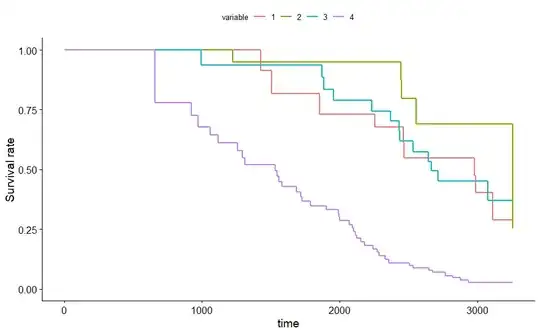I will start off by saying that I am aware of this post, but applying Sheppard's correction in my case would seem to lead to a negative variance; so either I don't understand that post, or I have a different problem.
Consider $n$ points $P = \{ p_1, ..., p_n \}$ sampled from a 2D uniform distribution in the rectangle $(a_x,b_x)\times (a_y,b_y)$, and a regular grid $G$ spanning that rectangle with $m = m_x \times m_y$ bins all with the same area: $$ v = \frac{b_x-a_x}{m_x}\cdot \frac{b_y-a_y}{m_y} $$
Then, define the following function: $$ \forall g\in G,\quad \rho(g) = \frac{\mathrm{Count(P\cap g)}}{n} $$ where we count the number of points in $P$ that fall in any single grid cell $g$. What are the mean and variance of $\rho(g)$?
The formula for $\rho$ looks like a mean estimator to me. The mean and variance of a continuous uniform distribution over a fixed-size interval are known. With this approach, the mean and variance of $\rho$ across $G$ given $P$ are therefore: $$ \mu_\rho = \frac{v}{mv} = \frac{1}{m} \qquad \sigma_\rho^2 = \frac{v^2}{12 n} $$ (Note that the variance term is divided by $n$ because we are talking about the variance of a mean estimator.)
From simulations though, the variance formula above seems to be wrong. If I understand correctly, applying Sheppard's correction in this case would subtract $v^2/12$ from the variance, which would give a negative result.
